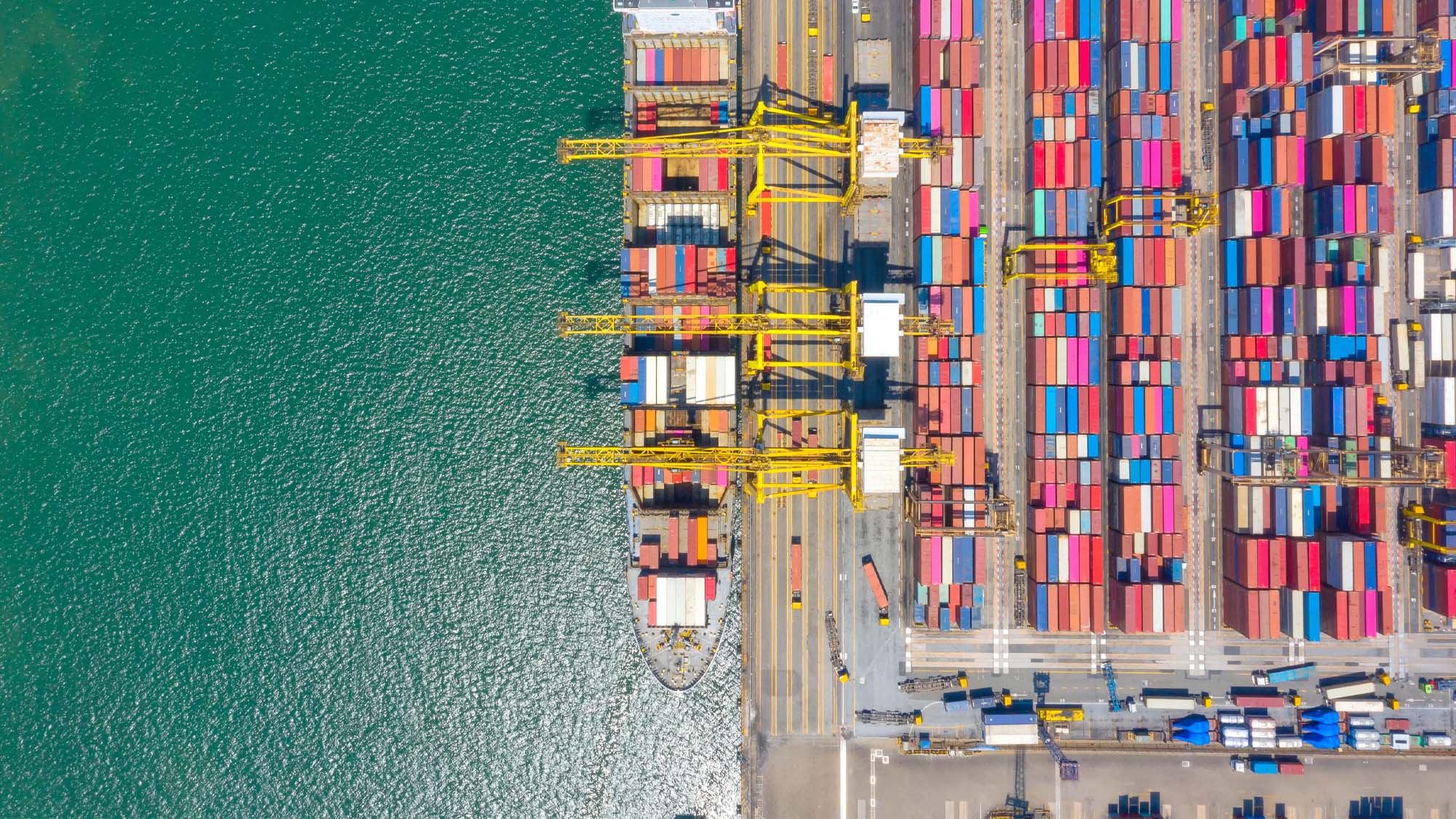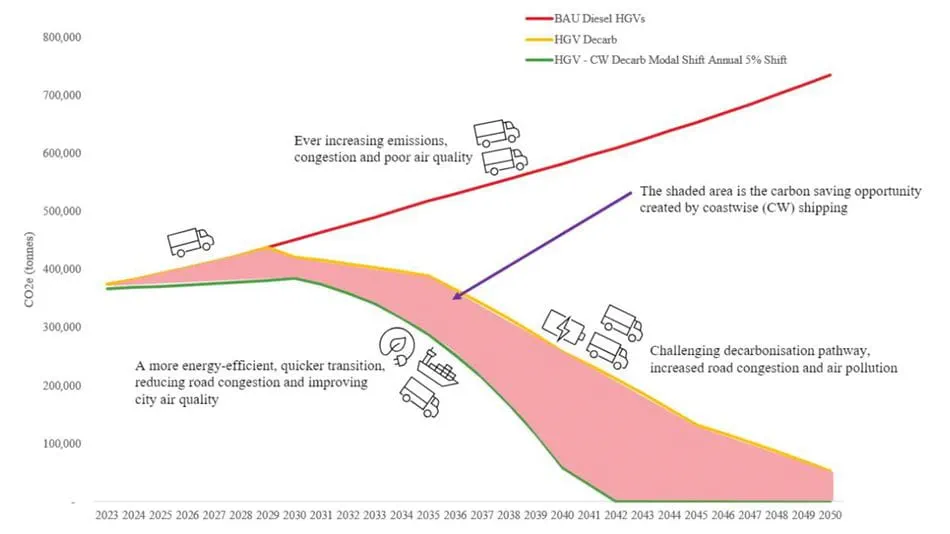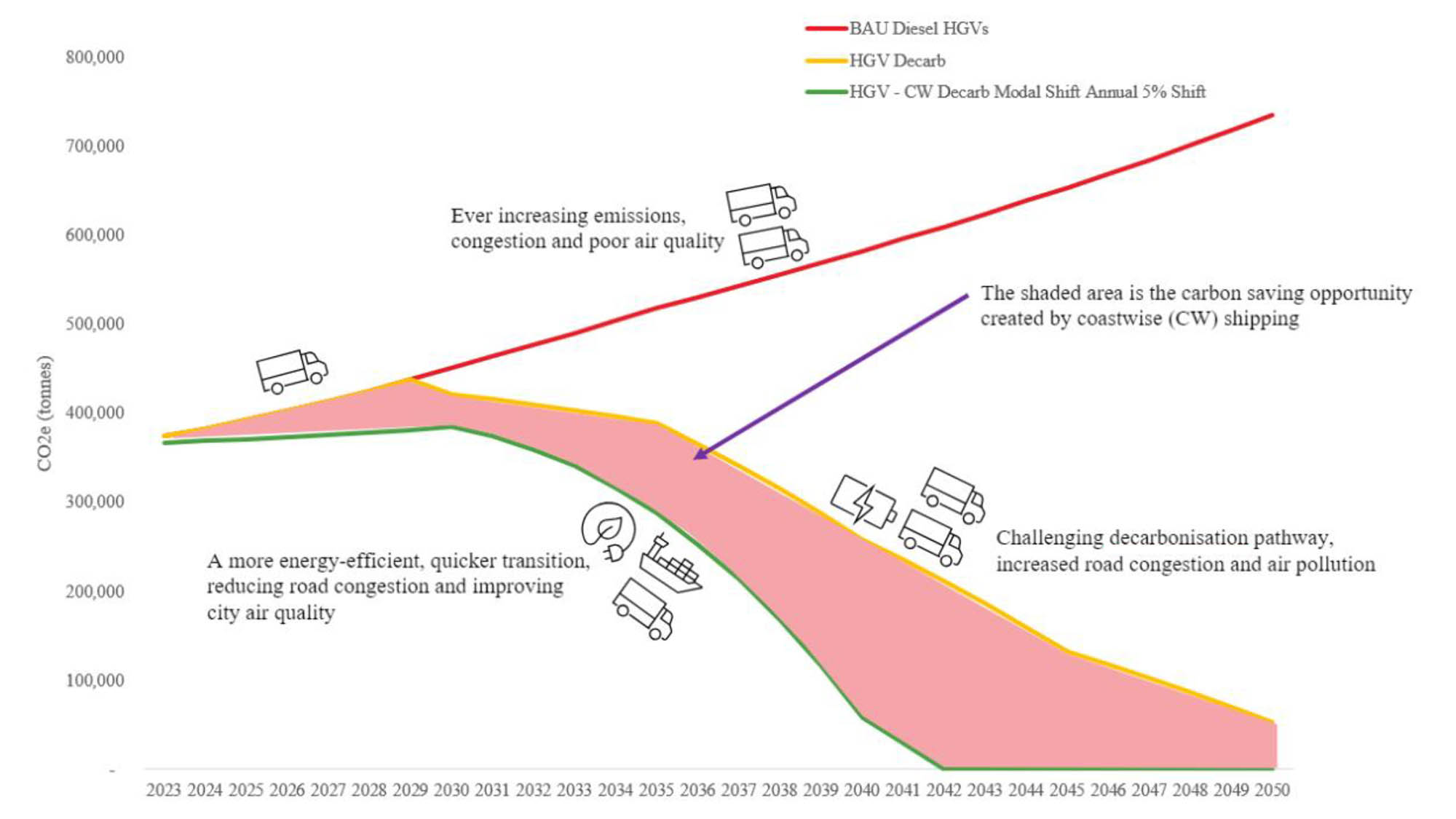As the economy grows, so do carbon emissions. In the UK, the Department for Transport predicts a significant increase in the volumes of freight imported into the UK by 2050, which, if our current way of moving freight continues, will see a 50 to 60% increase in heavy goods vehicle (HGV) traffic on our road networks. The impact on congestion and pollution will be significant, unless we plan to move freight differently.
The UK Department for Transport’s central forecast estimates that 2018 freight traffic volumes passing through ports will more than double by 2050. Similar forecasts predict a 39% increase in freight tonnage and over 100% increase in container traffic from 2016. Whichever figure is correct, all forecasts indicate a significant increase.
In 2020, most freight in the UK was moved by road, 77% of domestic freight, with the remaining 14% going by water and 9% by rail. Assuming the lowest growth figure of 39%, a doubling in freight being moved by rail would still result in a circa 40% increase in HGVs on the road network. The UK’s strategic road network (SRN) carries two-thirds of all freight and congestion is currently the greatest contributory factor to delays on the SRN with delays returning to pre-Covid levels.
Freight - significant emitters
Decarbonising road freight is inherently difficult. Over half of UK road freight CO2 emissions are generated by HGVs. While the development of electric and hydrogen powered HGVs will reduce carbon emissions over time, particulates from tyres, breaks and road dust will increase particularly as HGVs are disproportionately responsible for these emissions because of their heavier weight.
At the same time, the HGV driver population is also shrinking and aging, and roles are becoming harder to fill. There are 53,000 fewer drivers working in 2023 than in 2017. The convergence of these factors paints a difficult picture for the UK’s ability to move goods around the country – a major risk for future economic success. The UK will need to adapt how freight is moved and optimise the use of the resources and infrastructure available.
An island's opportunity
What if the UK’s island nature offered part of the solution? Why not move goods directly and closer to their ultimate destination by ship? We undertook a recent study to assess the UK’s potential to shift the movement of containers from HGVs onto water. The majority (54%) of container imports originate from outside the UK and EU, transporting slow moving goods, where reliability of goods delivery trumps speed of delivery. Today, just three ports handle 70% of the UK’s containers: Felixstowe, London (Tilbury) and Southampton, with 70% of the contents moved on by road and the remainder by rail.
Our study proved that in reality up to 26.5% (or 820,000 containers) could be moved by coastal shipping, with a particular focus to the North-West, North-East, Scotland and Yorkshire and the Humber regions. Such a shift would deliver significant benefits in terms of congestion and emissions but also reduce logistics costs and support the growth of regional economies.
Coast emissions are lower
In terms of CO2 emissions, the transition would save 9.6 million CO2 tonnes when compared to diesel HGVs and 2.6 million CO2 tonnes when factoring the current HGV decarbonisation pathway.
Average operating costs for coastal transport compared to road per container are between 50-56% lower, depending on whether the vessel is 50% or 75% loaded. The transition would reduce transport operating costs by 31%, a saving of circa £4 billion. Regional ports would also see an increase in volume resulting in private investment and job creation in line with the government’s economic levelling up agenda.
Of course, moving containers from entry ports to regional ones does not complete the cargo’s journey to its destination. But it does account for the ‘trunk’ leg of the journey in a way which produces less CO2, is more economical and reduces congestion. HGVs will still be required to move containers from ports to local warehousing but the distances will be significantly lower than going by HGV from an entry port hundreds of miles away.
This also means that the existing and understandable ‘range anxiety’ concerns familiar to existing electric and hydrogen HGV owners, would reduce. Shorter journeys would also likely lead to greater appeal among the driver workforce: drivers could make more journeys per shift, meaning fewer overnight jobs and better work/life balance – something the industry isn’t known for today.
Encouraging a coastal shift?
The benefits of increasing coastwise shipping are obvious, so why is this not happening? The UK Government does currently offer grants to support the transfer of freight moved by road onto water. However, the risk of setting up the routes and generating enough volume to do so sit with the shipper and the grants are retrospective. It’s a world apart from the subsidised transport operations for passenger trains, trams and buses, so unsurprisingly there have been virtually no applications in the last 5 years.
Given how hard transport decarbonisation is, and the clear need for a sustainable and resilient freight model, we hope the government will start to share some of the risk with the private sector and radically reform the grant mechanism. Major carbon savings, cleaner air and a more secure economic future are tangible prizes for the country as a whole.
 ;
;


